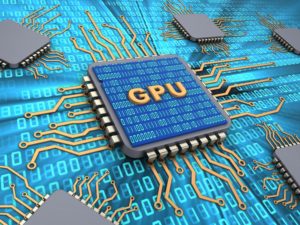
SQream Boasts 15x Speedup for GPU Data Warehouse

Because it runs on GPUs, SQreamDB was already fast. But the company says with today’s launch of SQreamDB 3.0, it can process queries up to 15 times faster, which will allow customers to get answers to tough business questions in minutes instead of days.
The 15x speed boost can be seen in multi-table joins, the time-sucking data gathering operations that are the bane of data warehouses everywhere. The speed-up will allow SQream Technologies customers to get results from big SQL queries in a matter of minutes or seconds, instead of hours or even days, says Ami Gal, SQream’s CEO and co-founder.
“An organization just wants to run their dashboards, not go home and see the results tomorrow,” Gal tells Datanami. “It’s very important for business that need to know right now what’s going on in different parts of their organization using their BI tool.”
SQream is one of a handful of GPU-powered relational databases that have emerged in the past few years. Buoyed by the ever-growing processing capacity of NVidia GPUs, SQream claims that it can process tough SQL queries against tens or hundreds of terabytes of data in a fraction of the amount of time it takes traditional MPP data warehouses. Unlike other GPU analytic software packages, SQream does not include a visualization layer, and instead lets customers use the SQL-based BI tool of their choice.
In addition to running multi-table joins faster, SQreamDB 3.0 brings enhancements to another critical part of the data warehousing lifecycle: data loading. In the previous version of SQreamDB, the database could load 2 to 3 TB per hour of data ingestion per node, Gal says. “Now we are between 4 to 6TB, which is amazing,” he says.
One SQream customer has spending more than 24 hours to load six hours’ worth of data into their data warehouse, Gal says. After moving to SQreamDB, the load time dropped to less than an hour, he says.
“This is a major problem for companies,” Gal says. “We have prospects coming to us just for ingestion. They are running much faster now when they can see the analytics on the recent hours of data creation.”
The new release also features a new feature that automatically selects the optimal compression scheme based on actual data being ingested. SQream says the new feature saves disk space, reduces I/O operations, and accelerates query performance. “It’s very important to be able to compress the data aggressively and do it automatically based on the data,” Gal says. “That saves a lot of storage space.”
SQream has also built something called “dynamic workload management” into the new version. Gal says this feature is important for clients who have a lot of data and need to prioritize different analytic workloads based on priority and not the order of the queries sitting in the queue. “We are enabling this in that version,” Gal says. “It’s really important for a lot of clients.”
SQream is growing quickly as data sets build and GPU clusters become more mainstream, thanks in part to NVidia’s success in positioning GPUs as the preferred processor for training deep neural networks. In the past six months, the company, which is headquarter in New York City and houses R&D in Tel Aviv, Israel, doubled its workforce. In May, it finalized a Series B funding round that brought in $26.4 million. One of the companies participating in that round was Chinese e-commerce giant Alibaba, which is also white labeling SQreamDB.
Related Items:
GPUs Seen Lifting SQL Analytic Constraints
A Shoebox-Size Data Warehouse Powered by GPUs


























